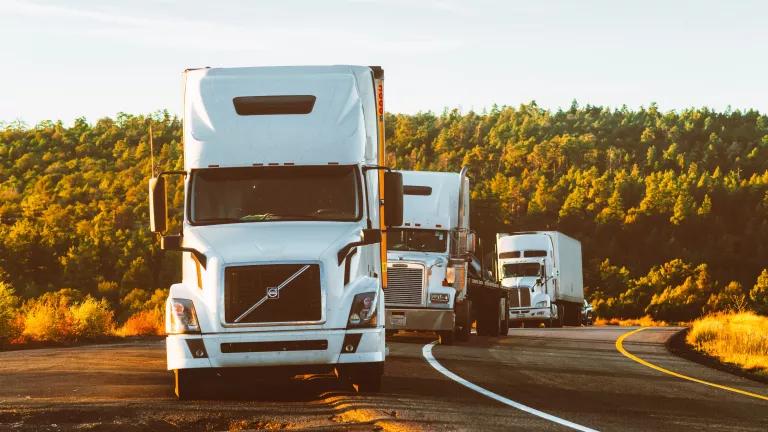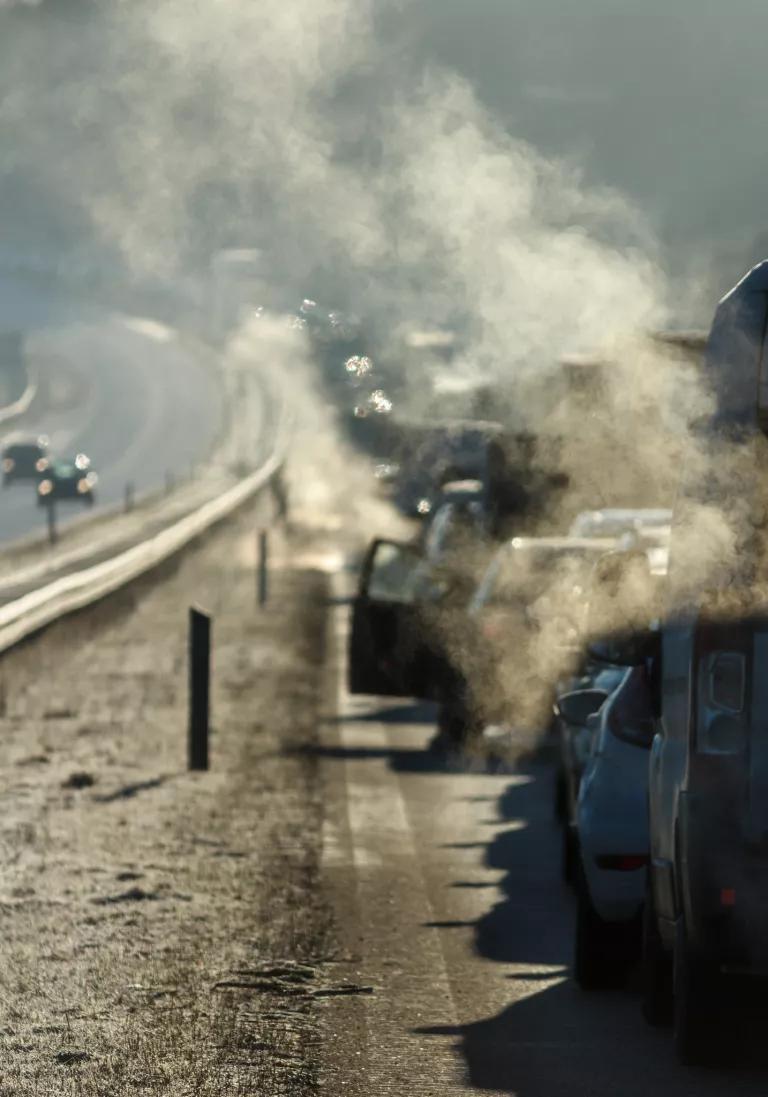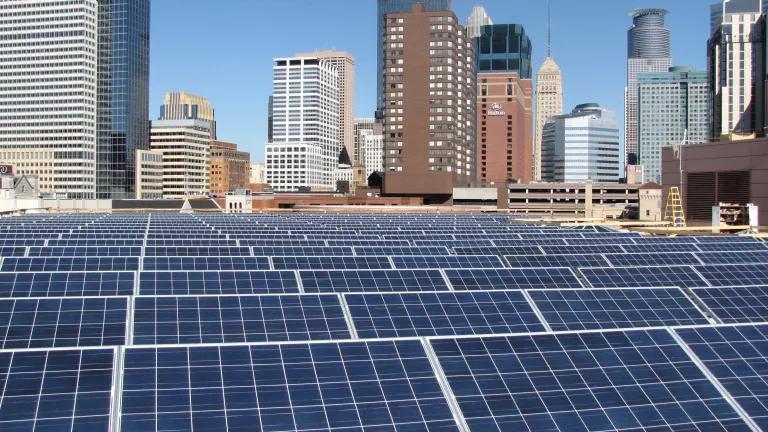15 States Take Historic Action on Transportation Pollution
A bipartisan group of governors representing 15 states from across the nation and the District of Columbia spoke in unison today, committing to zero-out toxic air pollution from medium- and heavy-duty trucks by 2050. The announcement is the largest-ever multi-state collaboration to clean up transportation pollution.

Photo by Quintin Gellar from Pexels
A bipartisan group of governors representing 15 states from across the nation and the District of Columbia spoke in unison today, committing to zero-out toxic air pollution from new medium- and heavy-duty truck and bus sales by 2050. The announcement is the largest-ever multi-state collaboration to clean up transportation pollution.
By signing a memorandum of understanding (MOU), a diverse mix of states that includes California, Colorado, Connecticut, Hawaii, Maine, Maryland, Massachusetts, New Jersey, New York, North Carolina, Oregon, Pennsylvania, Rhode Island, Vermont, and Washington as well as the District of Columbia agreed to work collaboratively to move from dirty fossil fuel trucks towards zero-emission electric vehicles.
The MOU, organized by the Northeast States for Coordinated Air Use Management (NESCAUM), calls for 30 percent of new truck and bus sales to be zero-emission by 2030 and 100 percent zero-emission by 2050. These states collectively account for almost 50 percent of the U.S. economy and nearly 40 percent of goods moved by truck (by value).

Photo by Markus Spiske from Pexels
Under the MOU, states will work together to accelerate the medium- and heavy-duty zero-emission vehicle market with input from stakeholders, including frontline communities, public health experts, organized labor, utilities, businesses, manufacturers, and environmental groups.
To meet these targets, key policies are identified in the MOU for states to consider, including the Advanced Clean Truck Rule and investments in electric vehicle charging infrastructure. The plan the states develop will serve as a roadmap to increase electric vehicle supply, encourage zero-emission vehicle purchases, and establish a supportive ecosystem comprised of a trained workforce, charging infrastructure, and financing tools.
The agreement’s ambition matches the challenge and sends a clear message: zero-emission electric trucks and buses are the future.
Big Challenges Demand Bold Action
Transitioning to zero-emission medium- and heavy-duty vehicles is long overdue. When these vehicles burn diesel or gasoline for power, they belch black smoke filled with toxic air pollution, such as nitrogen oxide (NOx) and particulate matter (PM), or soot. The transportation sector is the single largest source of NOx emissions, which leads to smog, and a major source of PM pollution. Heavy-duty vehicles make up the largest share of transportation’s NOx pollution and is expected to continue being a significant source of smog over the next decade.

Source: U.S. EPA, National Emission Inventory Air Pollutant Emission Trends, www.epa.gov/air-emissions-inventories/air-pollutant-emissions-trends-data
This pollution chokes cities and rural communities, resulting in increased respiratory and cardiovascular diseases, including asthma, lung cancer, heart attacks, and strokes, and can cause premature death. The hazard to public health and the environment of these and other pollutants is so great, the U.S. Environmental Protection Agency sets national standards, known as National Ambient Air Quality Standards, to identify pollution concentration levels that are unhealthy. Sadly, 45 percent of U.S. residents live in counties with unhealthy levels of smog or soot.
Air pollution is a public health crisis for many Americans. In the 15 states that signed the MOU, transportation’s NOx emissions range from almost half to three-quarters of all in-state NOx pollution.
Truck and Bus Pollution Reflects Racism and Classism
It is vital that communities hurting the most from air pollution reap the benefits from zero-emission vehicles immediately. Racist and classist policies in America led to a transportation system where many freeways and freight hubs were sited in or around communities of color and low-income communities, disproportionately exposing them to toxic diesel vehicle emissions. States must prioritize using zero-emission technology in operations that directly impact suffering communities, such as port drayage and warehouse trucks.
COVID-19, a respiratory virus, has further intensified these inequities. Research suggests that areas with higher long-term levels of air pollution also suffer higher COVID-19 death rates. Structural inequities, including disproportionate exposure to transportation pollution, are devastating communities of color and African-Americans in particular, who are being hit hardest by COVID-19.

Photo by Kim Hansen from Flickr
Exacerbating existing air pollution levels is just one of the devastating consequences of climate change. The transportation sector is responsible for nearly 30 percent of U.S. greenhouse gas emissions causing climate change. Every region in the country has experienced firsthand the severe cost in people and capital from some combination of climate-induced droughts, wildfires, tornados, hurricanes, flooding, or elevated temperatures that worsen air quality and stifle economic activity. Tackling climate change means removing diesel and gasoline from transportation.
The Benefits of Trucks to Come
In 2019, over a quarter-million people were employed in the clean vehicle industry. To date, over $300 billion in global private investments have flowed into electric vehicles. As the MOU states act to attract private investments and make their own, new jobs will emerge.
Moreover, thanks to the lower cost of filling up with electricity rather than fossil fuels, electric vehicles save fleets and consumers money on fuel. Money that’s largely redirected toward local services—the most labor-intensive and skill-diverse sector of the economy—that cannot be outsourced. Shrinking and shifting expenditures from diesel and gasoline to the labor-intensive service industry, will serve as a potent job creator and economic stimulant.
Fuel savings are just one slice of the pie. Battery electric trucks and buses—regardless of who owns them—can shrink electric bills for all customers by using the electric grid to charge when electricity demand is low. This spreads more sales over the fixed cost of the system.
And that’s exactly what’s happening. In the two utility service territories with the most electric vehicles (Pacific Gas & Electric and Southern California Edison), utility revenue from charging exceeded system costs from 2017 to 2018, putting downward pressure on everyone’s electric rates.
Other States Should Join the MOU
While 15 states banded together today, other states can and should sign-on to the MOU. This is a historic undertaking with clear public health, environmental, and economic benefits offered by zero-emission trucks and buses. The collective learnings and state actions initiated as a result of the MOU will prove invaluable for states working to correct structural inequities and pursue a sustainable economic recovery.


